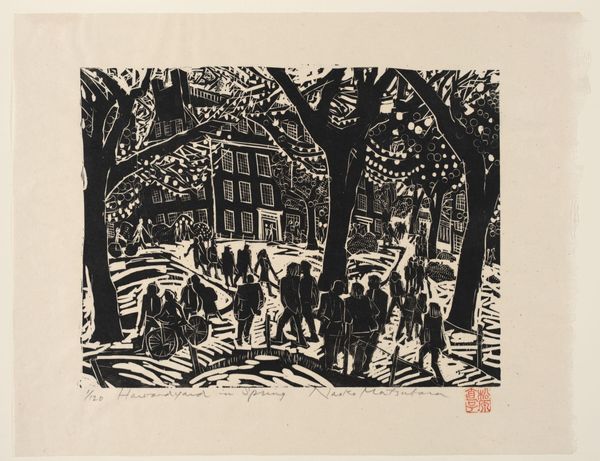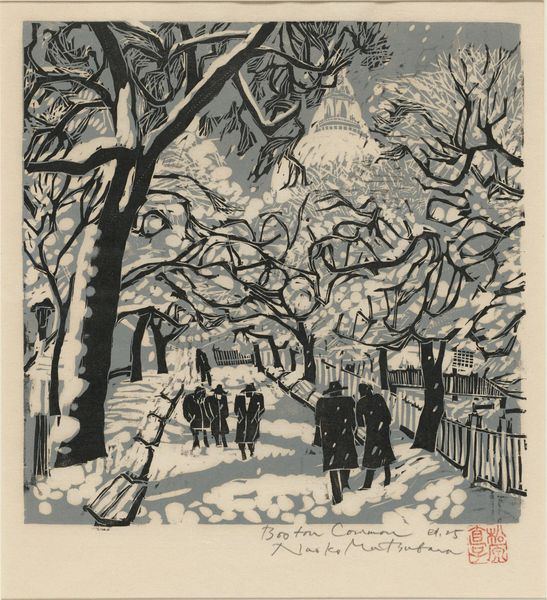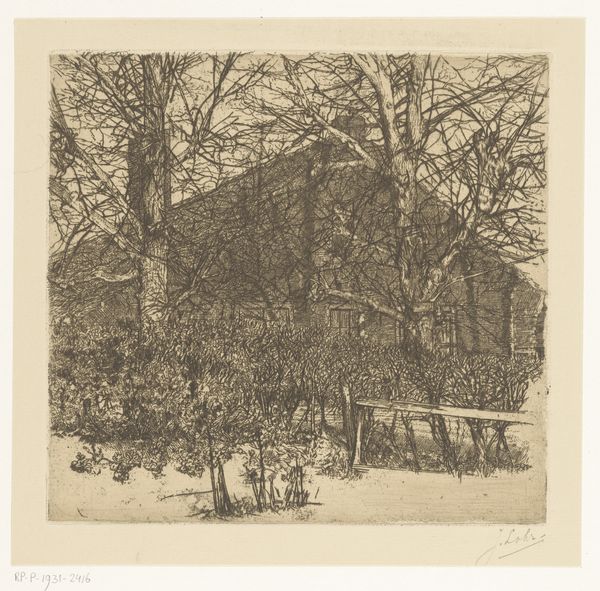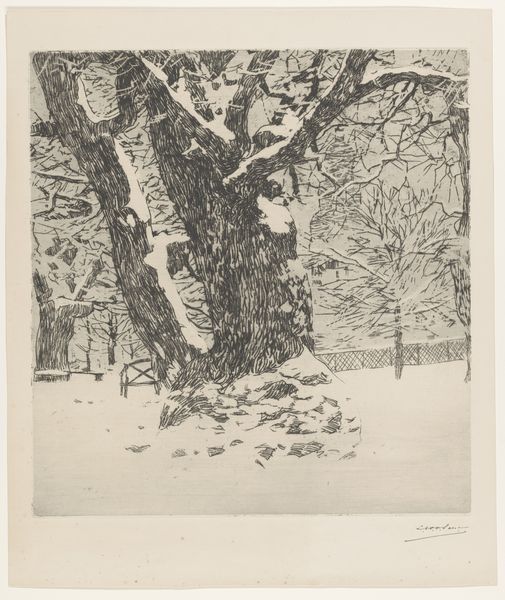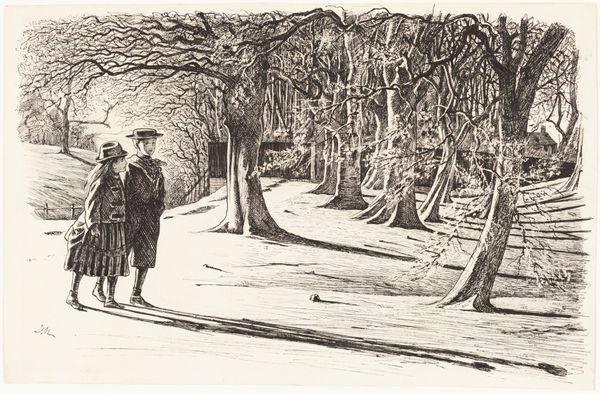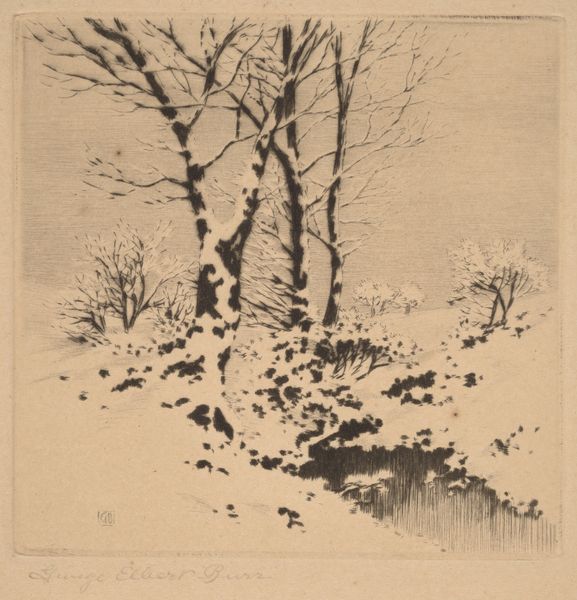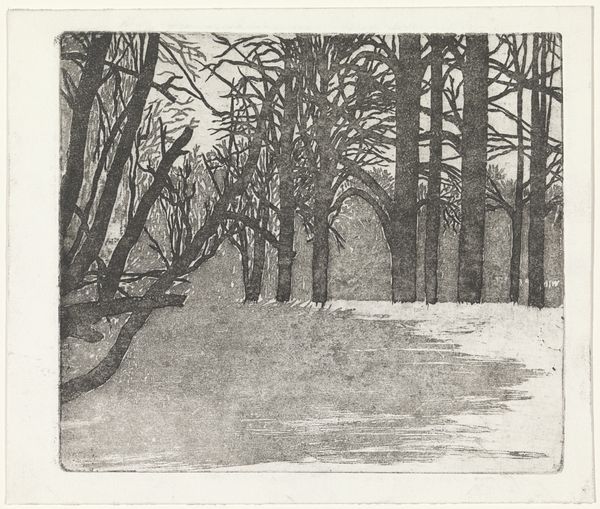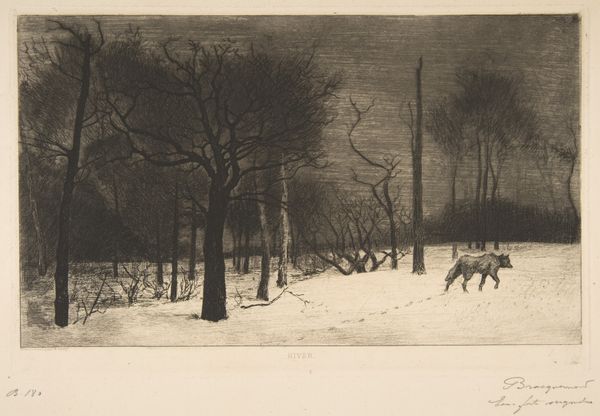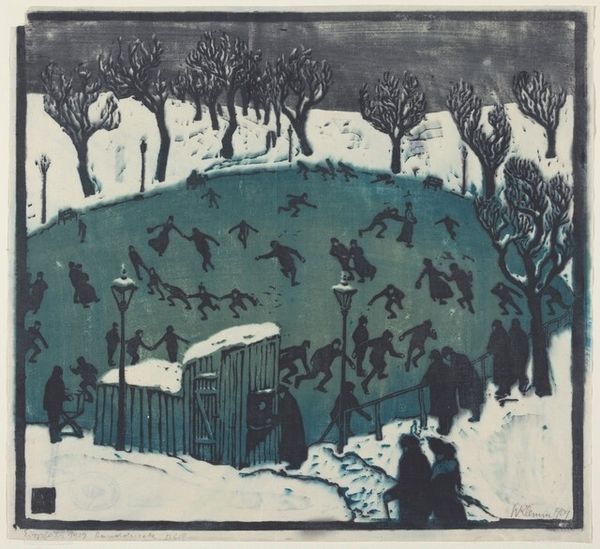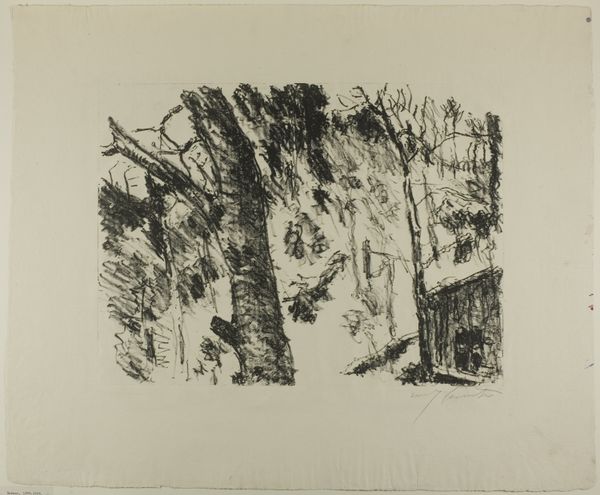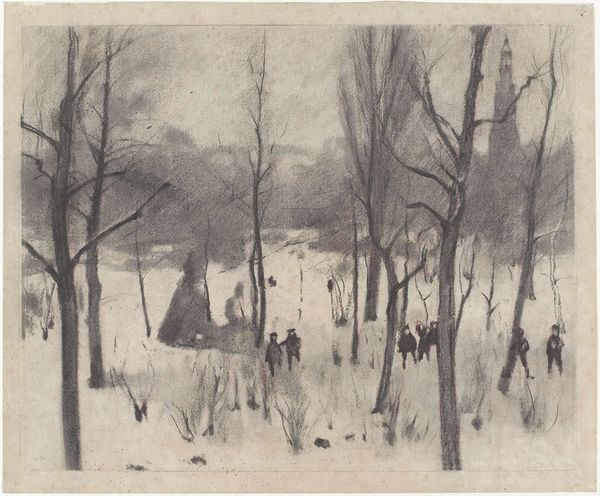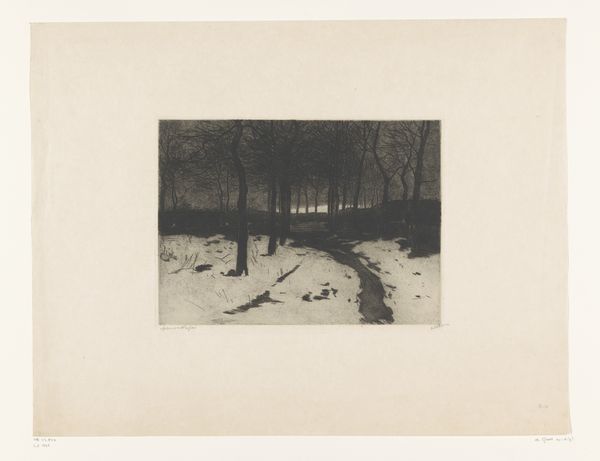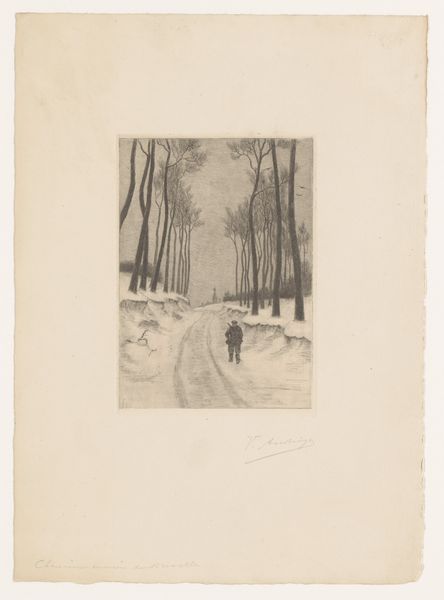
print, linocut, woodcut
# print
#
linocut
#
landscape
#
linocut print
#
expressionism
#
woodcut
Dimensions: height 473 mm, width 470 mm
Copyright: Rijks Museum: Open Domain
Editor: We’re looking at "Men in a Winter Forest," a linocut print by Emil Orlik from around 1905. It's incredibly stark, with these figures dwarfed by a dense, snow-laden forest. What do you make of it? Curator: It’s fascinating how Orlik uses the woodcut to evoke a sense of almost oppressive silence. The composition – the deep blacks of the trees against the white snow - emphasizes a tension between man and nature. Consider the socio-political context; industrialization was rapidly changing landscapes. How might this imagery reflect anxieties about that shift? Editor: So, the figures aren't just *in* the landscape, they’re also perhaps symbolic of something *happening* to the landscape? Curator: Precisely. And it makes you wonder about the purpose of the gathering on the right side, doesn’t it? It is likely a hunting party which would imply a relationship with the landscape rooted in consumption and resource extraction. Editor: Oh, I see! Almost as if their presence, their activities, are further encroaching on the natural world represented by the dense forest? Curator: Exactly. And given the Expressionist leanings, notice how the emotional impact isn't just aesthetic but politically charged. What societal conversations do you think this imagery engaged with when it was first displayed publicly? Editor: That’s a great point, about the socio-political angle. I was initially just thinking about the beauty of the snow, but now I see a critique. It also opens up new research areas for me! Curator: Art always exists in a complex web. Focusing on its historical and cultural roles unlocks a richer understanding of its lasting power.
Comments
No comments
Be the first to comment and join the conversation on the ultimate creative platform.
